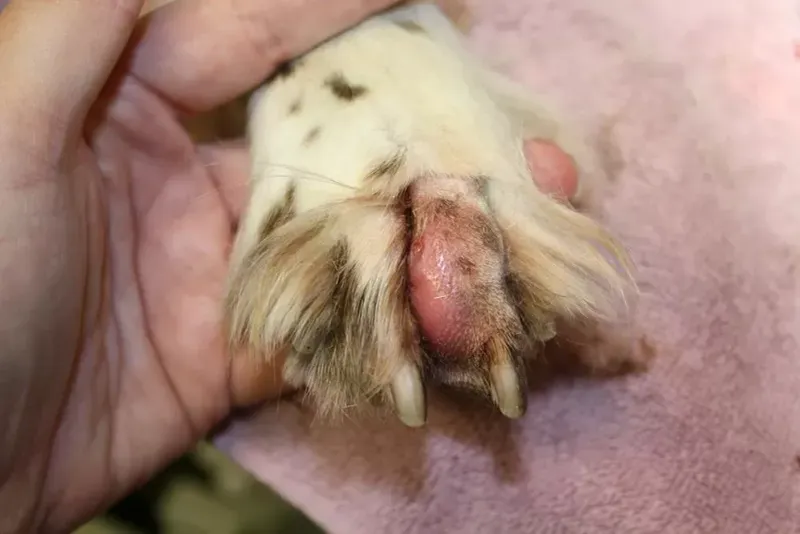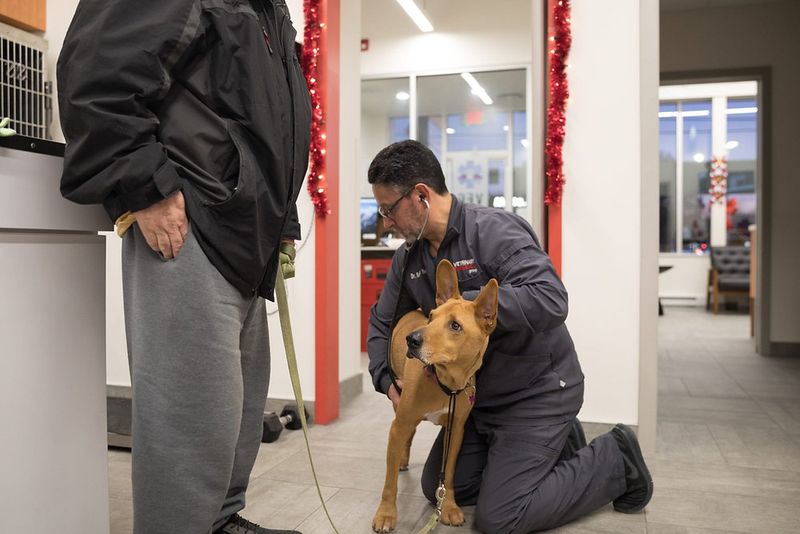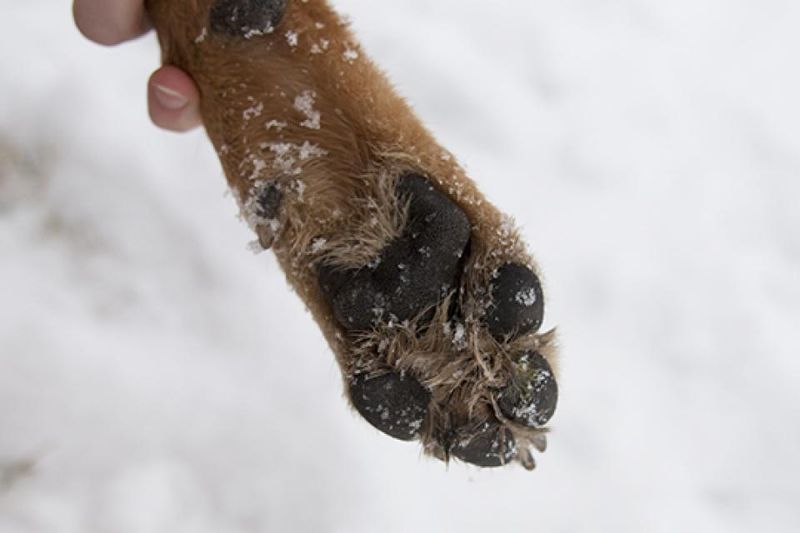As winter approaches, the risk of frostbite in dogs becomes a pressing concern for pet owners. Frostbite occurs when the skin and other tissues freeze due to prolonged exposure to cold temperatures. Recognizing the symptoms early can prevent serious complications and ensure your furry friend’s safety. Here are ten critical symptoms to watch for and how you can act quickly to alleviate them.
Pale or Gray Skin Patches
Ever noticed your dog’s skin turning pale or gray during the frosty months? This change in color is an indication of frostbite. The skin may appear waxy or feel colder than usual to the touch. In severe cases, the affected areas may even become hard and brittle, signaling a serious issue.
Such changes often occur on extremities like ears, tail, and paws, where blood circulation is limited. Immediate veterinary attention is crucial to prevent tissue damage.
Wrapping the affected area in a warm cloth can help until professional help is available. Search query: “dog frostbite pale skin patches close-up”
Swelling in Affected Areas
Swelling might be your dog’s way of indicating discomfort and distress. When exposed to freezing temperatures, tissues swell as they react to frostbite. This swelling can lead to pain and decreased mobility, making it challenging for your pet to walk or play.
You might observe your dog licking the swollen areas excessively as they attempt to soothe the discomfort. It’s important to bring them inside and thaw the frozen parts gently.
Seek medical attention promptly to prevent further damage and ensure a speedy recovery. Search query: “swollen dog paw frostbite”
Blisters or Ulcers Formation
Blisters or ulcers forming on your dog’s body are red flags of frostbite. These often develop as the skin tries to recover from freezing temperatures, leading to fluid-filled blisters. They can appear on the tips of ears, tail, or paw pads, causing significant discomfort.
These blisters are prone to bursting, potentially leading to infections if not treated appropriately. Keeping the affected area clean and sterile is vital.
Consulting a veterinarian for proper treatment is essential to avoid complications and to relieve your pet’s pain. Search query: “dog ear blisters frostbite”
Limping or Stiffness
Notice your furry friend limping or moving stiffly in the cold? It might be frostbite taking its toll. The reduction in blood flow during cold weather can lead to stiffness in joints and muscles, causing noticeable limping.
Such changes in mobility can hinder their daily activities, making even short walks a challenge. Encouraging rest and keeping your dog warm can alleviate stiffness temporarily.
However, professional intervention is required to ensure there’s no lasting damage. Search query: “dog limping in snow frostbite signs”
Skin Turning Black
If your dog’s skin begins to darken or turn black, it signals severe frostbite! This alarming change is due to tissue death caused by prolonged exposure to cold.
Blackened skin indicates necrosis, a serious condition that requires immediate veterinary care to prevent further tissue loss. The affected area might also emit an unusual odor, indicating decomposition.
Quick action can prevent the need for amputation or more invasive procedures. Search query: “dog tail blackened skin frostbite”
Shivering and Cold Ears
Shivering is a natural response to cold temperatures, but paired with icy ears, it might be a sign of frostbite. The outer parts of the ear are particularly susceptible due to less fur and more exposure.
Frequent shivering combined with cold ears suggests your dog is struggling to maintain its core body temperature. Warming them with a blanket and moving indoors is crucial.
Monitoring for additional frostbite symptoms is needed to assess the severity. Search query: “dog shivering cold ears frostbite”
Pain or Sensitivity to Touch
Has your dog become overly sensitive to touch during winter? Pain and sensitivity in certain areas can point towards frostbite. Routes like paws and ears become tender, causing discomfort when touched.
This hypersensitivity arises due to nerve endings reacting to freezing temperatures, which can be distressing for your pet.
Gently warming the affected area and seeking veterinary care can alleviate pain and ensure recovery. Search query: “dog sensitive paw frostbite”
Lethargy and Unwillingness to Move
Lethargy might be more than just winter blues; it can hint at frostbite. Cold weather drains energy levels, making your dog unwilling to engage in physical activity or play.
This lack of enthusiasm can translate into prolonged periods of rest, as the body conserves energy to combat the cold.
Creating a warm environment and consulting a veterinarian can help revive their energy. Search query: “lethargic dog in snow frostbite”
Peeling or Flaky Skin
Peeling or flaky skin is an often-overlooked symptom of frostbite. As the skin suffers from cold exposure, it begins to lose its natural moisture, resulting in dryness and peeling.
This condition can escalate, leading to painful cracks if not addressed quickly. Applying a pet-safe moisturizer can provide temporary relief.
Consulting with a vet is advisable to prevent further deterioration. Search query: “dog flaky skin frostbite”
Whimpering or Crying
Whimpering or crying might be your dog’s plea for help during a bout of frostbite. This vocalizing behavior is a response to pain and distress caused by cold temperatures affecting sensitive areas.
It’s a sign that your pet is struggling and requires immediate attention to relieve their discomfort.
Providing warmth and consulting with a veterinarian will ensure your furry friend’s well-being. Search query: “whimpering dog frostbite signs”










